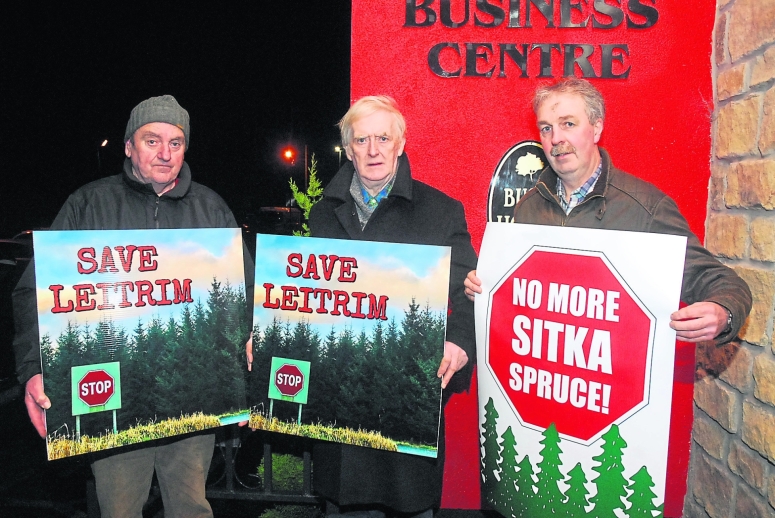The latest figures released by the government show that over 10 percent of the land in Ireland is under forestry. Over half of the forested area is devoted to conifer plantations of fast growing Sitka Spruce, with conifers accounting for a total of over 74 percent of all forests while broad leaves such as oak and ash make up less than 26 percent of Irish forests.
While the department of agriculture in this report has pointed out that the current level of afforestation is likely the highest level in nearly 400 years they ignore the fact that the current monoculture dominated by Sitka Spruce is in no way a recreation of the ancient broadleaf forests which once covered Ireland. In fact the species most associated with native broadleaf woodland, oak, ash, and beech account for just over 7 percent of Irish forestry.

These statistics reveal the impact that government support for forestry has had in promoting afforestation, though we are still far behind the EU average of over 33 percent. Theres is also the worrying trend whereby the growth of non native conifers mask the decline in native forests.
The mass afforestation of some areas with Sitka Spruce monocultures has already provoked a backlash in some areas, most notably Leitrim where a local campaign group, Save Leitrim, have organised events highlighting the mass Sitka Spruce mono culture which has developed in the county.

This monoculture damages biodiversity, by removing habits for several species such as hen harriers and negatively affects water quality. More worryingly 20 percent of the forestry in Leitrim is now owned by non farmer investors, this marks a removal of land ownership from the hands of the local communities into the hands of private investors who do not have to live in the communities they own forestry in.
There is a real economic benefit which Ireland can gain from further developing our forestry sector, the focus on spruce mono cultures however reveals a forestry plan which is only concerned with short term profitability. There appears to be little concern with the negative environmental impact of these spruce mono cultures which actively damage our ecosystem and biodiversity.
The premiums paid to landowners for planting Spruce are effectively paying landowners to plant forests which don’t provide any significant boost to Irish biodiversity, while simultaneously ignoring the crisis caused by rhododendrons in Ireland’s last ancient oak forest in Killarney. The loss of biodiversity caused by the decline of Ireland’s oak forests cannot be reversed by merely planting non native monocultures.
The government needs to introduce a forestry policy which both provides a decent income for local communities and promotes biodiversity. This could easily be achieved by doing more to encourage the planting of broadleaf forests which will provide suitable habits for wildlife, and promoting the development of local forestry infrastructure such as sawmills which will ensure that the forestry developments benefit the entire community, and the promotion of agroforestry which will allow farmers to continue to farm on planted land.
These options need to be promote while efforts are made to reduce the number of sitka spruce monoculture forests if we are to ensure that Irish forestry provides a benefit for landowners, communities, and biodiversity.

One thought on “Ireland’s forestry problem”